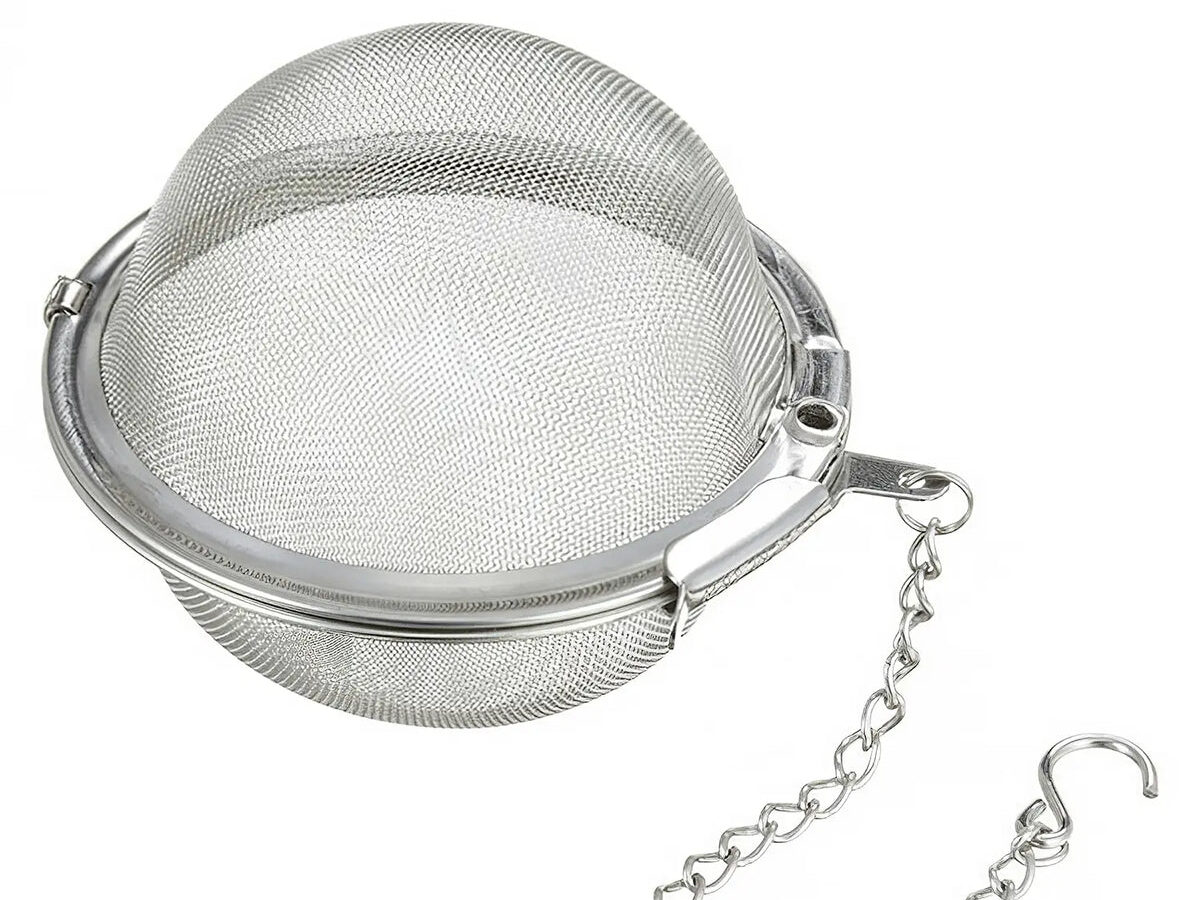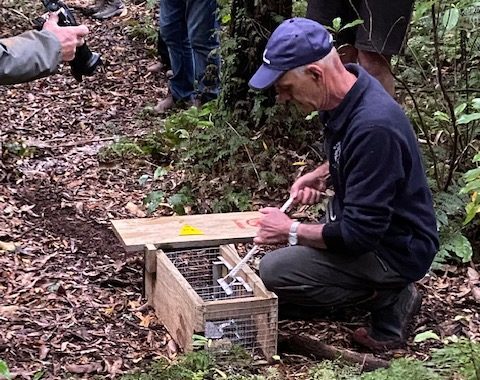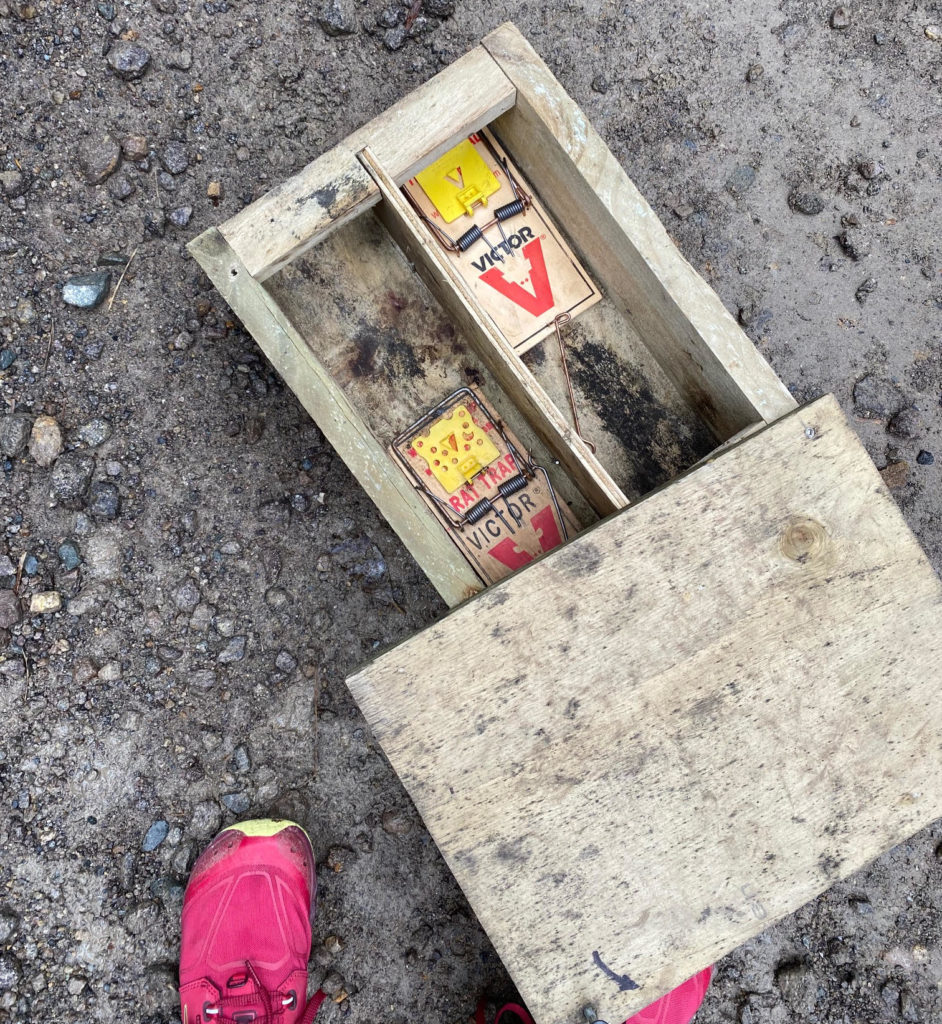ON THIS PAGE
The basics
- At least once a year, use a brush to clean your trap. Lubricate it with beeswax or linseed oil.
- Every couple of visits, set off your traps to ensure they are working – an old pair of socks is a good way to do this because ‘dry’ (empty) firing of traps results in trap damage and unnecessary wear.
- To prevent bait from being stolen by mice and slugs, place it in a mesh tea strainer or suspend it up high in the trap box in a plastic sniffer pot. The benefit of it being up high is that it allows the scent to carry. Placing bait high up on a nail on the side of the trap box has a similar effect.
- A mouse trap in the back of your trap box helps catch the mice that might be stealing your bait, and a dead mouse caught in the trap will also help attract stoats and rats.
- Tongs can be useful for removing any catches from your trap, especially hedgehogs.
- If you have a fresh catch, leave it near your trap so it attracts other introduced predators to your trap. Or if it is a bit old and manky, bury it or throw it into the bush nearby.

DOC series traps
- An introduced predator that has had a bad experience with a trap will become trap shy and harder to catch in future. Make sure the trap is properly set so it will trap a predator cleanly.
- Ensure the edges on the mesh baffles are smooth to prevent introduced predators catching themselves on a sharp edge and getting a fright. Filing these burrs down until smooth can take a while, so cutting the mesh long and folding it over can save time and have the same result. Some groups place plastic piping along the bottom edge of the baffle to make it smooth; it will also protect the galvanising and make the baffles last longer.
- Removable baffles inside the trap make it easier to clean the trap and remove any catches.
- On private land, where there isn’t the risk of non-target species such as weka or kiwi, open the mesh up to 4×4 squares so hedgehogs, ferrets and large rats can get in easily.
- Add a wooden ramp from the base up to the hole in the inside baffle so it’s easy for the introduced predator to access the trap. They are also then level with the trap plate (a tip from the Otanewainuku Kiwi Trust).
- Place a block on the edge of the trap box to prevent the lid spinning the wrong way or spinning too far. This will help look after your trap screws and also provides a stable surface to put things on (a tip from the Otanewainuku Kiwi Trust).
- Tie coloured ribbon or tape around any tools or screws that are easily removed so they can be easily found if they are dropped.

- Tying ribbon or tape to the kill barand sticking it out the side of the trap makes it easy to see if the trap has been set off. When the kill arm goes down, the ribbon goes inside the box and is no longer visible.
- If you are using stainless steel DOC traps, ensure you are also using stainless steel screwsto attach the trap to the box, otherwise the screws will rust out.
- Some people find it easier to set DOC series traps using a piece of rope. If your trap is secured well to the ground then you can thread a piece of rope through the handle and use this to pull the handle and set the trap.
How to stabilise double-set boxes
Did you know that double-set boxes catch far more than single-set traps? An introduced predator caught in the trap attracts others to the trap. However, sympathetic firing (both traps going off when one is fired) can be an issue. Here are some ways to keep trap boxes stable:
- Ensure traps are bedded down well (soften trap location with a small spade and push box back and forth into soil, then stand on top of the box to really push it down well). If you have stock or pigs around, secure the trap to the ground using pegs or a reinforced bar (rebar).
- Place a large rock on top of the trap box to prevent it moving.
- Some people place woollen felt (from My Food Bag or similar) under the trap mechanisms.
- Isolate each trap by cutting a gap across the base.
Double-set 150s are less likely to sympathetically fire the other trap off as the springs aren’t as strong and cause smaller vibrations when they go off.
Watch a video on getting the most out of DOC 200 traps.
Victor Professional rat trap
- Oil the base with linseed oil or beeswax. This will also protect the mechanism.
- Use a wire brush to remove rust from the treadle staple, springs and kill bar tip of Victor trap. A drill with a wire brush wheel makes light work of this if you have a few to do – see Predator Free Miramar’s photos and tips on how to do this.

- Soak Victor traps in oil (canola, soya, peanut or any salad oil) overnight, or longer, then drain excess oil off traps. If you have a lot of traps you can soak a bunch at the same time and then use a bucket with holes in the bottom, like a colander, to drain excess oil.
- Sometimes the staples on the trap can pop out. To prevent this happening, tap the staples in with a hammer.
- A double-set Victor(two traps in the same tunnel) can be successful, as the first catch attracts another predator to the trap. (Dimensions are 420mm long x 250mm wide x 170mm high). Watch a video on the Victor double-set tunnel.
- For more information, see our advice on Victor Professional rat traps or watch predator control expert Cam Speedy’s video Getting the most out of your Victor.

